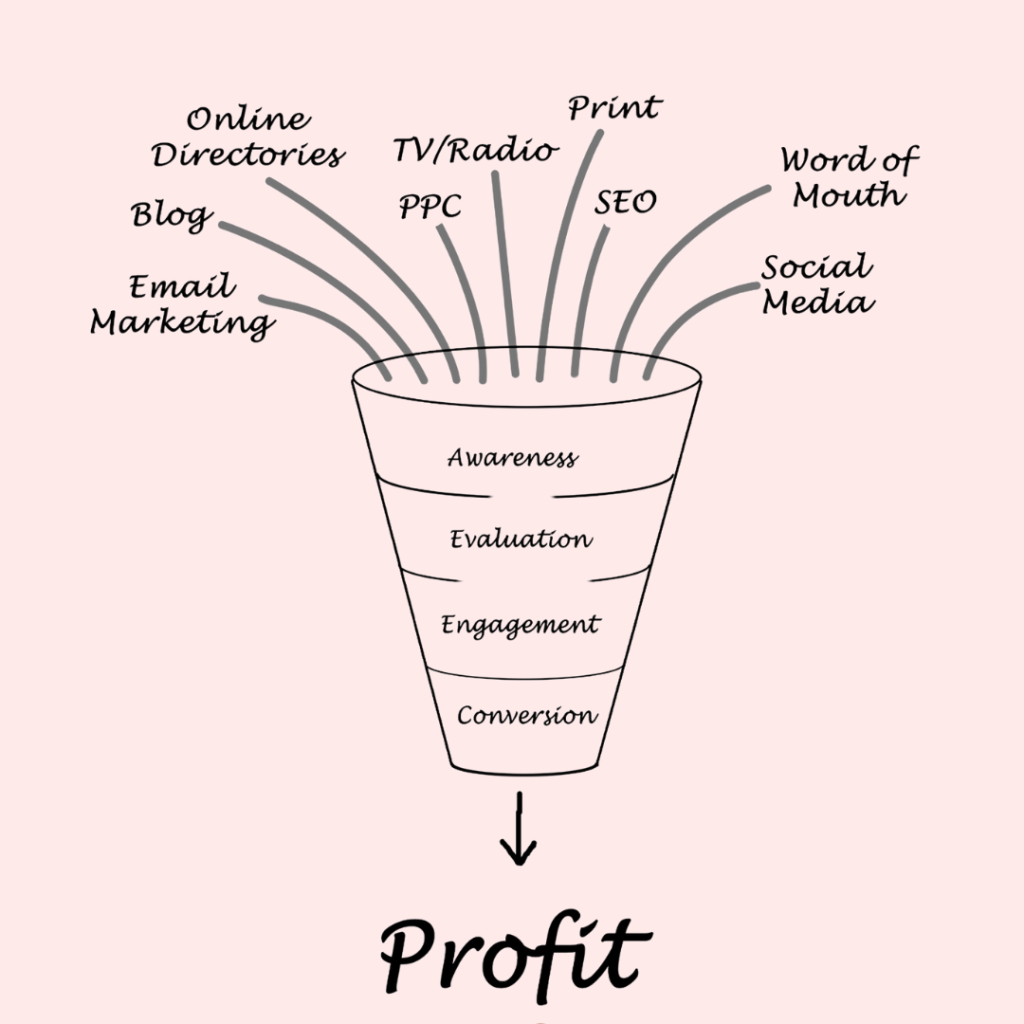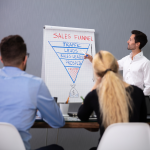A sales funnel is a vital concept for any business aiming to convert potential customers into loyal buyers. It represents the journey that prospects go through, from first hearing about your business to making a purchase. By understanding each stage of the sales funnel, you can effectively guide potential customers and optimize your strategies to improve conversions. Let’s break down each stage of the sales funnel in detail:
Awareness Stage
The Awareness Stage is the first step in the sales funnel, where potential customers become aware of your business. This stage is crucial because it sets the foundation for all subsequent interactions. At this point, your goal is to cast a wide net and reach as many people as possible. Here are some effective methods to create awareness:
- Social Media: Engage with your audience by posting interesting content and running targeted ads. Platforms like Facebook, Instagram, and LinkedIn can help increase visibility and attract new prospects.
- Content Marketing: Use blogging, videos, and podcasts to share valuable information related to your industry. High-quality content can help establish your brand as an authority and drive traffic to your website.
- SEO: Optimize your website and content to rank higher in search engine results. Effective SEO practices ensure that potential customers find you when searching for relevant terms.
- Networking: Attend industry events, participate in online communities, and connect with potential customers and partners. Networking can enhance your reach and introduce your business to a broader audience.
Interest Stage
Once potential customers are aware of your business, they enter the Interest Stage. At this point, they are curious and want to learn more about what you offer. Your objective is to engage and educate them to build a relationship. Strategies to spark interest include:
- Educational Content: Provide articles, how-to guides, and webinars that address your audience’s needs and pain points. Educational content positions your brand as helpful and knowledgeable.
- Email Newsletters: Send regular updates and valuable information to keep your audience engaged. Newsletters can offer insights, special offers, and updates about your products or services.
- Interactive Content: Use quizzes, surveys, and live chats to interact with your audience. Interactive content can keep prospects engaged and provide valuable feedback.
- Social Proof: Share testimonials, reviews, and case studies to build credibility. Social proof helps establish trust and demonstrates that others have had positive experiences with your brand.
Decision Stage
In the Decision Stage, potential customers are evaluating their options and considering whether to purchase from you. They compare features, pricing, and benefits to make an informed choice. To influence their decision, you should:
- Provide Detailed Product Information: Offer clear descriptions, specifications, and benefits of your products or services. Make it easy for customers to understand what they are getting.
- Highlight Comparisons: Show how your offerings stand out from competitors. Emphasize unique features, benefits, and advantages that set your business apart.
- Offer Demos and Trials: Allow prospects to experience your product or service through free trials, demos, or samples. This can help them see the value firsthand.
- Present Special Offers: Use discounts, bundles, or limited-time promotions to encourage a purchase. Special offers can create a sense of urgency and drive conversions.
Action Stage
The Action Stage is the final step in the sales funnel where potential customers take the desired action, typically making a purchase. At this stage, your focus should be on ensuring a smooth and straightforward process. Here are some key tactics to facilitate this:
- Optimize Your Checkout Process: Make the purchasing process as simple and user-friendly as possible. Minimize steps, offer multiple payment options, and ensure that the process is secure.
- Provide Excellent Customer Service: Offer support through various channels, such as live chat, email, or phone. Address any questions or concerns promptly to enhance the customer experience.
- Follow Up: After the purchase, send a thank-you email and offer additional support or resources. Follow-up communications can help build customer loyalty and encourage repeat business.
Summary
Understanding and optimizing each stage of the sales funnel is crucial for converting potential customers into loyal buyers. By effectively managing the Awareness, Interest, Decision, and Action stages, you can enhance your marketing efforts and improve overall sales performance. Tailor your strategies to each stage to guide prospects smoothly through the funnel and achieve your business goals.
This comprehensive approach to the sales funnel will help you build a strong foundation for attracting, engaging, and converting customers, leading to long-term growth and success for your business.



